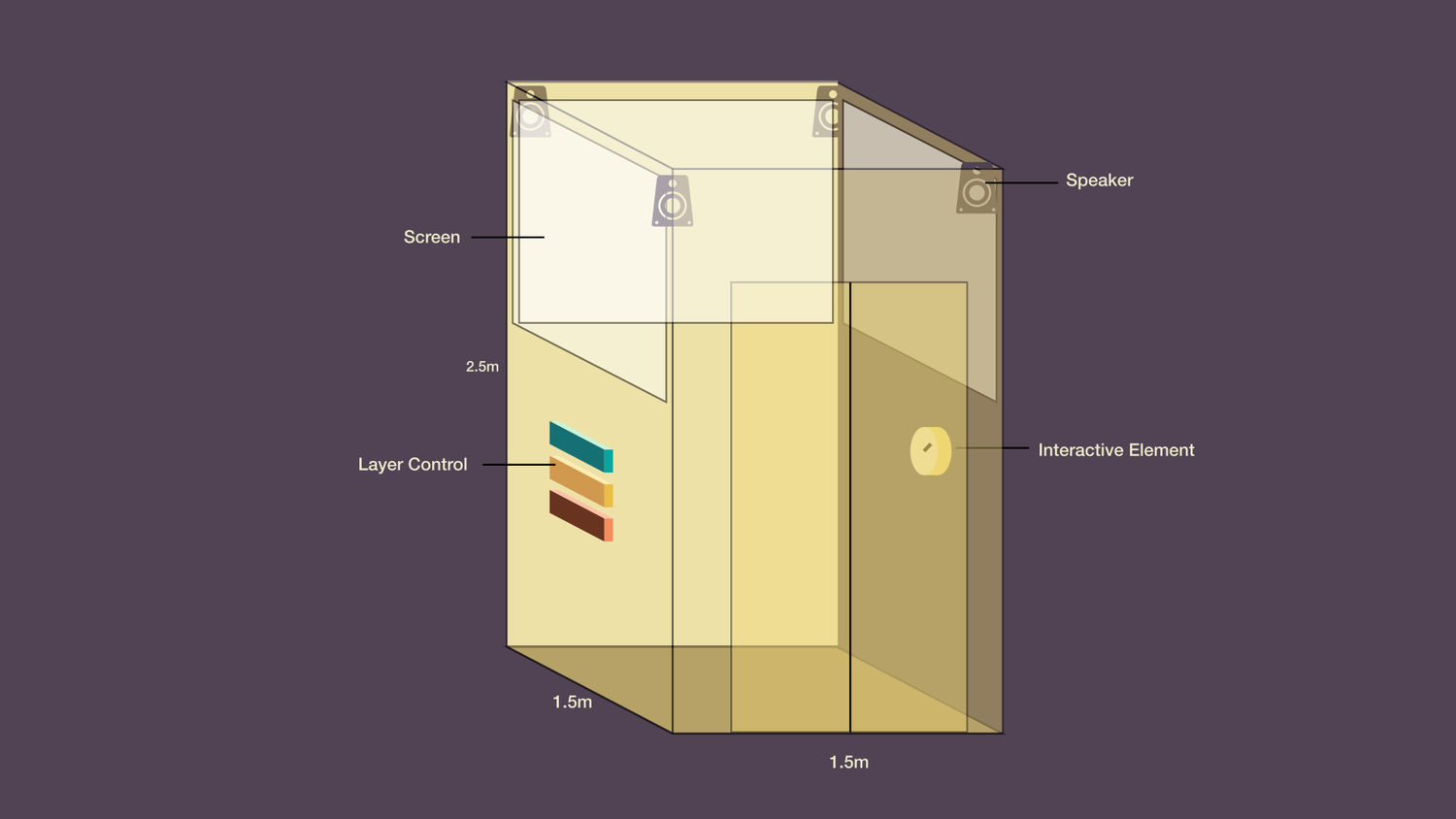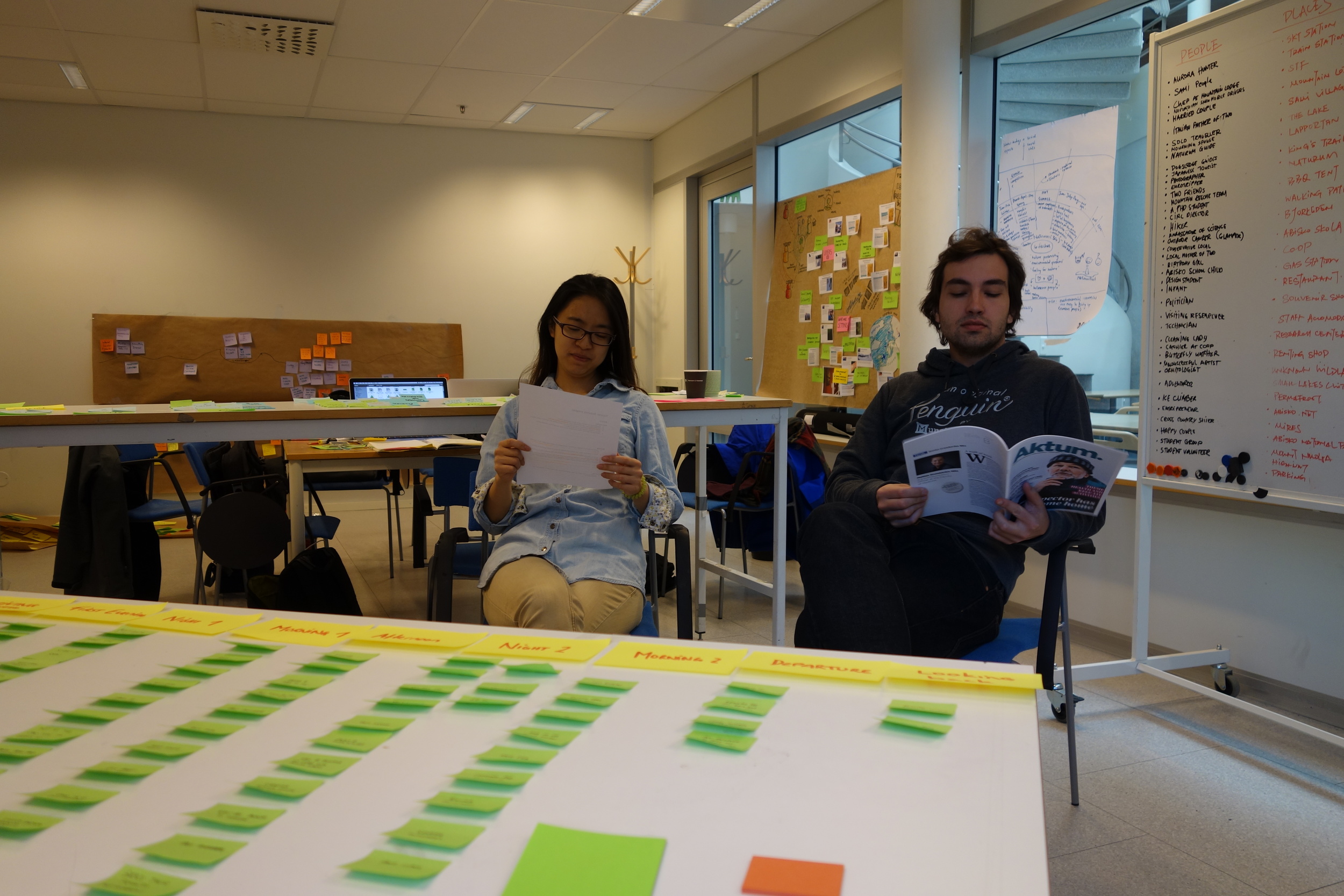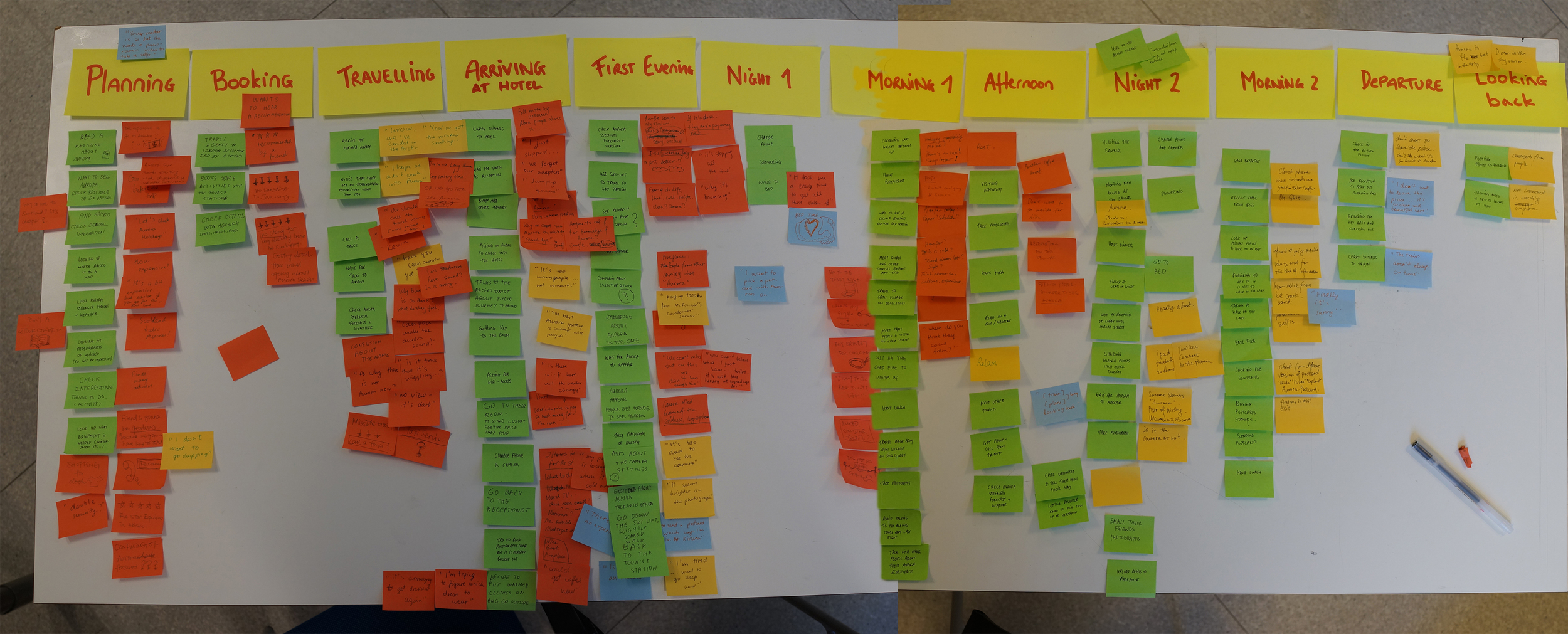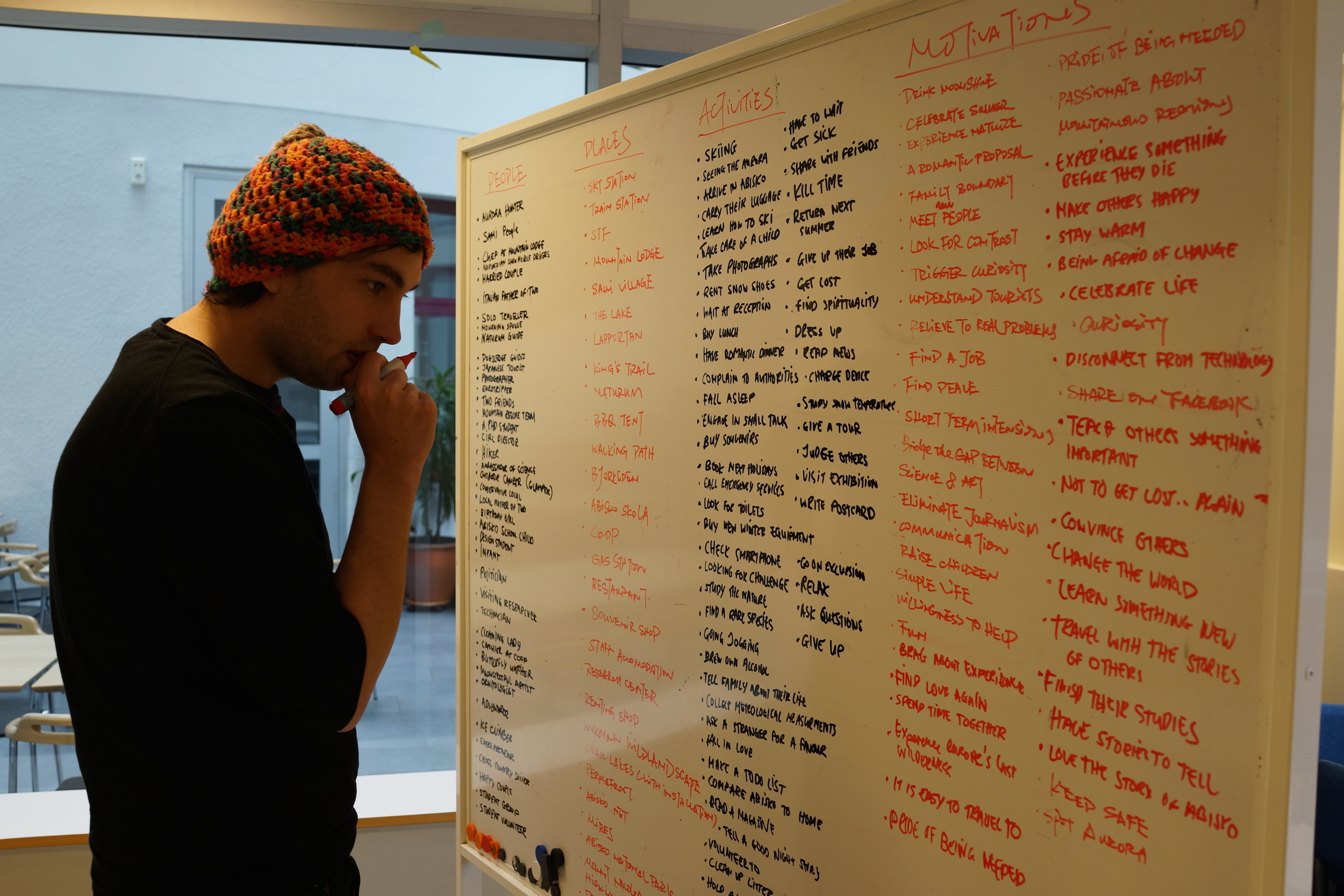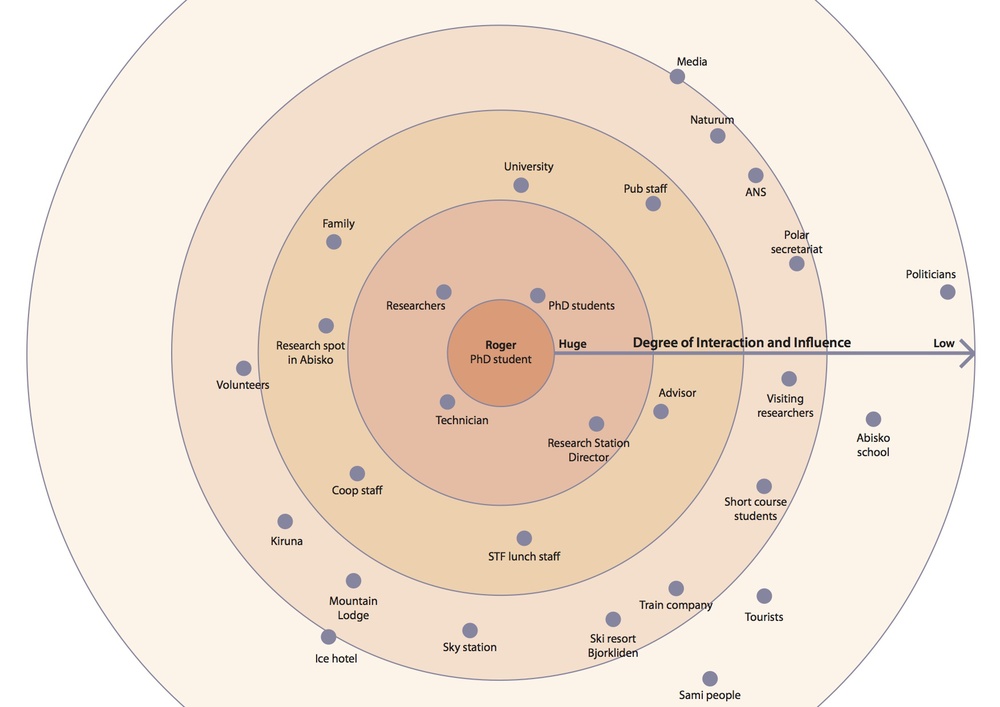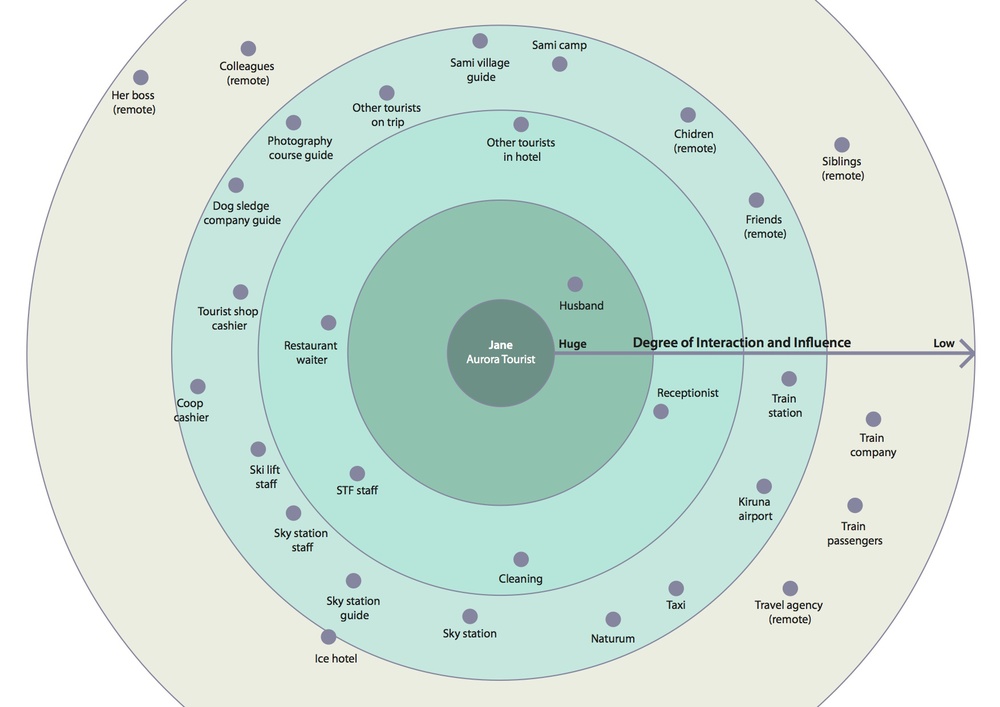How could we translate complicated knowledge into playful experience for general audience?
Abisko Layers is a service design project that helps Abisko Research Station in the Arctic bring their cutting-edge climate change research to the general audience. It engages visitors in three different levels: first using a virtual elevator to take them underground and over the cloud to spark their curiosity and then leading them to see real phenomenon and experiments in the nature and finally engaging them further with the research and knowledge with a smart device application.
Time: 10 Week (April-June, 2014)
Team: Yedan Qian, Kevin Guant, Jiaojiao Xu, Migle Padegimaite
Client: Climate Impact Research Center, Swedish Polar Research Secretariat
Contribution: Service Design, Ethnography Research, Storytelling, UI/UX Design, Graphic Design
Skills: Experience Prototyping(paper, props, video, projection, sound), Illustrator, Service Design (journey map, blueprint)
Design Brief
1. Make the on-going research at the Abisko Research Station more visible to the tourists visiting the area.
2. Design services, artifacts and installations that create curiosity, awareness and engage visitors in environmental questions.
3. Ensure that the concepts do not require a lot of maintenance or support from the researchers side as their capacity is limited.
Key Research Findings
A Guilt Free Experience
Respect the Tourists’ Goals
Different Levels of Engagement
Involve the Brain and the Heart
The tension of a potential outreach service is to educate tourists that do not necessarily want to be educated. To achieve this ambitious goal we expect to design a series of three experiences that gradually increase the time of engagement of the tourists with the service.
The first experience will need to speak to the tourists in a basic and very immersive level over a very short period of time (see ‘multi-sensory’). The second experience demands a higher level of engagement from the tourists to experience the information in-context. Finally, the last experience allows tourist to get a maximum of information but at the cost of a high level of engagement.
Storytelling Structure
In order to communicate the global warming research, we interviewed scientists in Abisko and studied the research by CIRC and some pop science magazines (e.g. Science, Nature) . Eventually we were able to categories some most interesting facts for tourists into three layers.
1. Air: Related to weather and the atmosphere (temperature increase, precipitation, rapid temperature changes)
2. Land: Related to flora & fauna (rising tree lines in Abisko, change in vegetation, caterpillar infestations, plant species invasion)
3. Soil: Related to permafrost & bacteria: (melting permafrost, installations on the mire, Methane deposit, greenhouse gases, oldest living bacteria)
Final Concept
Service Overview
The service engages visitors at three main touch-points with different ways of conveying information: Multi-sensory learning, In-context learning and In-depth learning. Afterwards, visitors can share their experience with other visitors within Abisko and their friends outside Abisko.
1. MULTI-SENSORY LEARNING: VIRTUAL ELEVATOR
GOAL: to give the tourists a quick 3-minute introduction in an entertaining way and spark their interest for further learning session.
Visitors are firstly introduced to a virtual elevator metaphorically takes them on a tour through the different layers of research. In each layer, they can experience short but interesting story through visual, audio and haptic channels. Finally, they are also informed other part of the service, in-context and in-depth learning.
2. IN-CONTEXT LEARNING: SIGNAGE & APP
GOAL: to point the tourists to some research-related locations so they can experience the climate change research done by CIRC’s in the real context.
Users are encouraged to find interesting research-related spots when they hike outdoors with the app. On each spot, there is a transparent signpost with see-through visuals overlapping the real environment behind it, which helps visitors make sense of the context. In addition to that, more interactive information related to the spot will pop up on the app.
3. IN-DEPTH LEARNING: TABLET & PHONE APP
GOAL: to provides visitors with an opportunity to know more about the details of the climate impact research stories and findings conducted in Abisko.
In depth-learning is facilitated through the mobile and tablet apps, where more context are introduced to the users, such as expedition stories, documentary videos and new research findings.
4. Sharing Experience: Inside Abisko
GOAL: to trigger conversations among visitors by reminding them of the “Abisko Layers” experience in a subtle way. We believe that reinforcing those learning memories by sharing what one learned is also important for reaching more tourists in Abisko.
We designed the phone charing station visually resemble of the Abisko-layer concept, and placed them stratigically across the tourists-gathered location. When people are sit inddor by the fireplace, enjoy coffee and chat, their conversation can be direct towards our service.
5. Sharing Experience: Outside Abisko
GOAL: to encourage visitors share information and experience outside of Abisko.
Therefore, we designed the both visually attractive and informative postcards to provide further information of researches at the back of the card. They will be possibly sent out to family and friends or kept as personal souvenirs.
Research & Design Process
Ethnography research
Throughout the project we had the opportunity to visit Abisko four times. Throughout these visits we interviewed and observe nearly two dozen of tourists, a couple of researchers and locals – some of them even multiple times.
Empathy Exercise: Persona, User Journey & Role Play
First we looked into our research stories and observation to create a persona to ensure we were all agreeing on whom we were designing our service for. Second, we created an elaborate user journey (covering pre-travel, booking, travel, arrival, stay and return) for our persona. We also used an elaborate role-play to validate our user journey and uncover critical pain points.
Service Design Approach
Stakeholder's map: bring together the potential stakeholders in the service scope and prepare a workshop to understand their point of view and concerns.
Service journey map: map out the activities, quotes and emotional level of the persona and the visible & invisible service providers that included in the journey to get a holistic understanding of what could happen and what are the potential opportunity areas.
Prototype & User Test
In order to improve our ideas we were testing the concept by simulating the service and the use of artifacts within.
We have simulated the multisensory experience by setting up the atmosphere in the actual elevator, trying out various binaural/surround sound systems, combining auditory stories with ambient music, creating immersive environments in small spaces with different lighting, as well as exploring ways to project visuals.
Throughout the design process we have also user tested our interfaces, which proved to be a source of invaluable feedback for further development.









